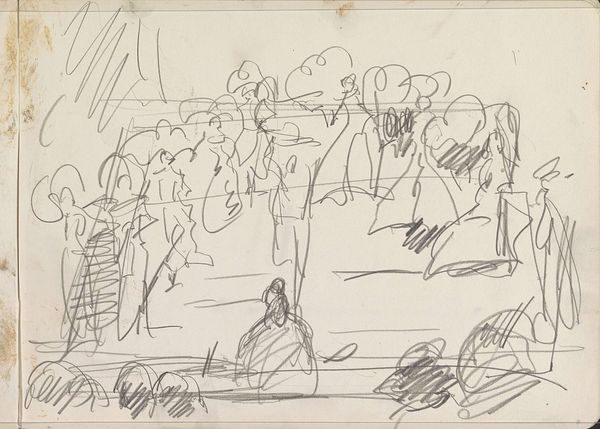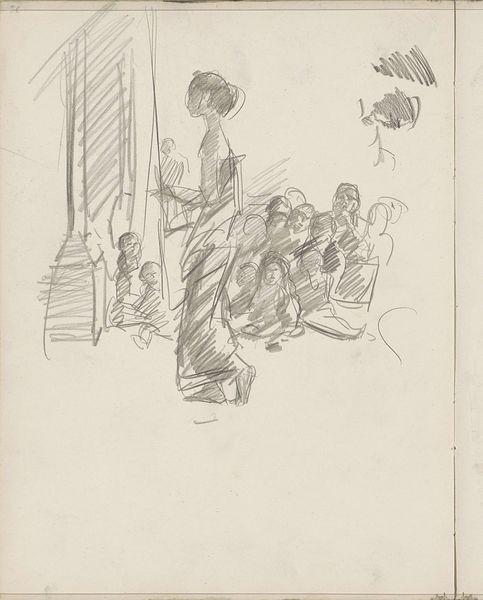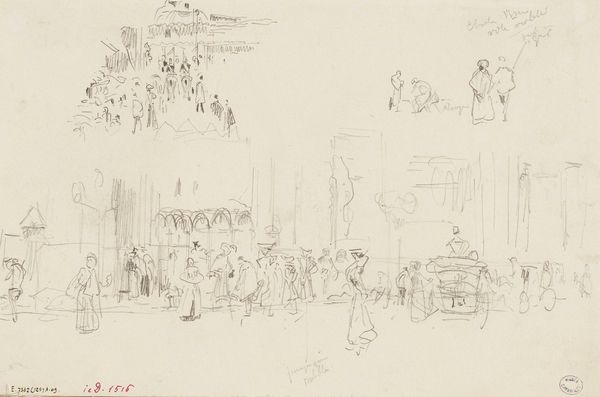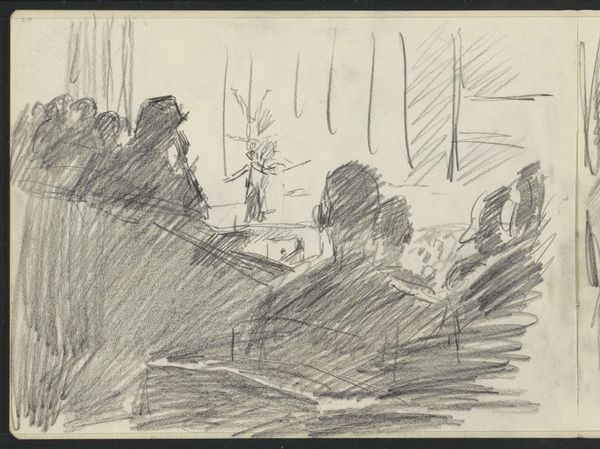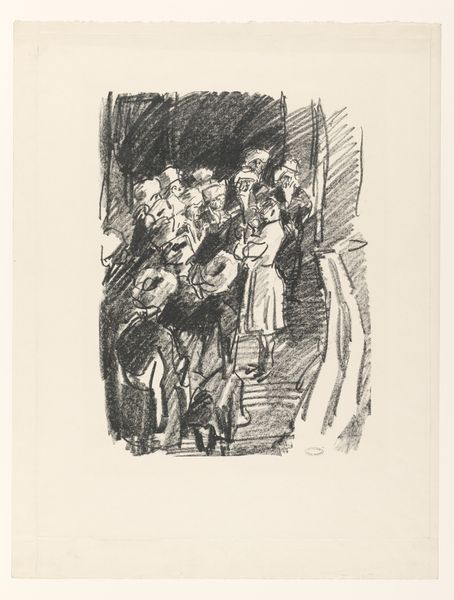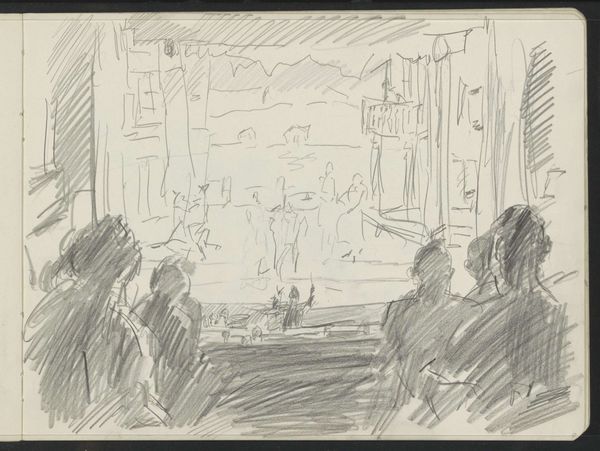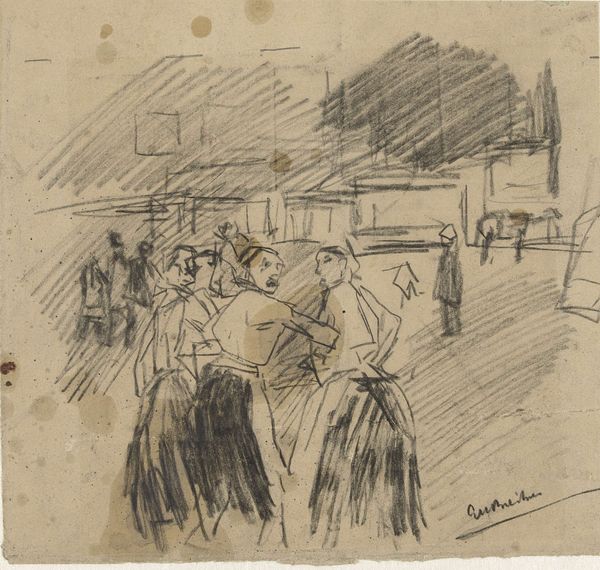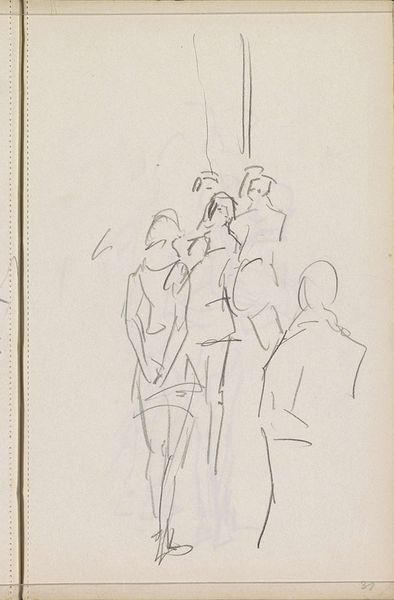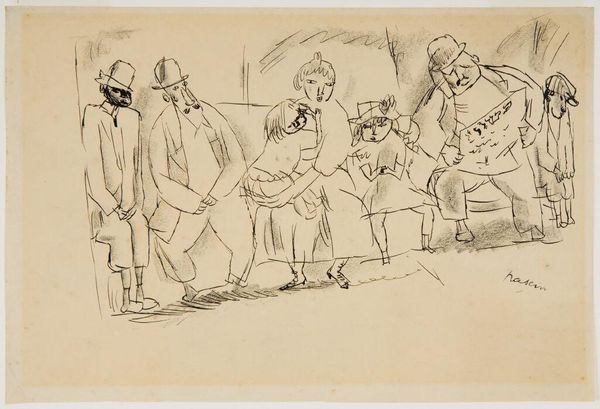
Copyright: Rijks Museum: Open Domain
Editor: So this drawing, “Kozakkenkoor” by Isaac Israels, dated between 1875 and 1934, is currently housed here at the Rijksmuseum. The medium appears to be primarily pencil and perhaps some ink. I’m immediately struck by its sketch-like quality and how that contributes to a sense of capturing a fleeting moment. What stands out to you in terms of its composition? Curator: The interplay of line and form is compelling. Consider the artist's strategic use of hatching and cross-hatching to define the figures and ground. Notice how the density of line work creates tonal variation, suggesting depth and shadow without relying on traditional modeling techniques. This economy of means invites us to appreciate the fundamental elements of visual representation, how a few carefully placed marks can evoke a complete scene. Editor: That's interesting. I see that. The sketchiness creates an image and the quick marks evoke movement, yet the image overall feels balanced. Do you think the balanced composition informs our interpretation of the work? Curator: Balance, yes, but perhaps not in a conventional, symmetrical sense. The dynamism is heightened by the varied angles of the figures and the asymmetrical distribution of weight across the picture plane. What structuralist elements, can we extrapolate to understand this piece beyond its face value? Editor: What I now see is the emphasis on line and the balance and asymmetry makes me believe that we have only a piece of a larger context, a moment pulled out and suspended on the page. Thanks. Curator: The semiotics of this art has provided a method in exploring form beyond surface aesthetics. The form itself contains substance that enriches art's interpretation. Thank you for these insights.
Comments
No comments
Be the first to comment and join the conversation on the ultimate creative platform.
